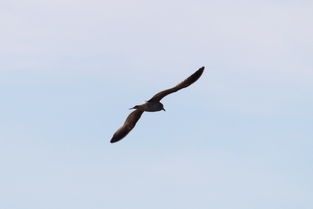Content:
Introduction: Fishing is an ancient pastime that has been enjoyed by people of all ages and backgrounds. It is a skill that requires patience, practice, and a good understanding of various techniques. One of the most important aspects of fishing is mastering the art of hooking. In this article, we will discuss how to effectively combine hooking techniques with fishing strategies to increase your chances of catching fish.
I. Understanding Hooking Techniques:
Selecting the Right Hook: Choosing the right hook is crucial for successful fishing. Hooks come in various shapes, sizes, and materials, each designed for specific types of fish. To ensure the best results, research the species you are targeting and select a hook that suits their mouth and feeding habits.
Proper Hooking Technique: When hooking a bait, it is essential to position the hook correctly. The most common hooking methods include: a. Lip Hooking: This method involves hooking the bait through the mouth or lips of the fish. It is ideal for fish that feed on the surface or near the bottom. b. Gullet Hooking: This technique involves hooking the bait in the fish's gullet. It is suitable for fish that are bottom feeders. c. Belly Hooking: This method involves hooking the bait through the belly of the fish. It is effective for fish that are found in schools and often feed on smaller organisms.
Adjusting the Hook Size and Shape: The size and shape of the hook can greatly affect your fishing success. Here are some tips: a. Larger hooks are better for catching larger fish and can accommodate heavier baits. b. Smaller hooks are ideal for delicate fish and can be used to mimic smaller prey. c. Curved hooks are more effective for holding onto the bait and preventing it from falling off.
II. Combining Hooking Techniques with Fishing Strategies:
Identifying the Right Bait: To increase your chances of catching fish, it is essential to use the right bait. Research the species you are targeting and choose a bait that resembles their natural food source. Live bait, artificial lures, and natural baits such as worms, crickets, and grasshoppers are popular choices.
Mastering the Art of Casting: Casting is a crucial skill in fishing. To improve your casting technique: a. Use a casting rod and reel designed for the type of fishing you are doing. b. Practice casting in open areas to become more comfortable with the rod and reel. c. Adjust your casting distance and power based on the fishing location and species.
Reading the Water: Understanding the behavior of fish in different water conditions can help you choose the right hooking technique and bait. Consider the following factors: a. Current: Fish may congregate in areas with strong currents, making them easier targets. b. Depth: Adjust your hooking technique based on the depth of the water and the species you are targeting. c. Cover: Fish often hide in areas with cover, such as rocks, logs, and submerged vegetation. Use a hooking technique that allows you to present your bait effectively in these areas.

Patience and Persistence: Fishing is a waiting game. Maintain patience and persistence, as fish may not bite immediately. Be prepared to adjust your hooking technique, bait, and location to increase your chances of success.
Conclusion: Mastering the art of hooking and combining it with effective fishing strategies can significantly improve your chances of catching fish. By selecting the right hook, understanding the behavior of the species you are targeting, and practicing various fishing techniques, you will become a more skilled angler. Remember that fishing is a hobby that requires time and dedication, so enjoy the process and the beauty of nature as you learn and grow as an angler.












